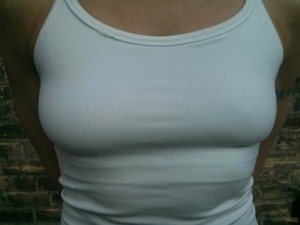Breast Asymmetry: What to do about it?
Breast asymmetry is a very common concern among women, adolescents and adults alike. No one is born with perfectly symmetric breasts and mild to moderate differences in breast shape, or a 1-2 cup size difference, or position in the developing adolescent are to be expected. Moreover, breast asymmetries that persist beyond puberty affect more than half of all women! In fact, one study in the Plastic and Reconstructive Surgery Journal, out of 100 women who wanted breast augmentation with implants, 88 percent had natural asymmetries. At a time when our body and mind are changing rapidly, when is breast asymmetry a cause for concern? Having uneven breasts may impact a young woman’s body image. Let’s review the pros and cons of surgical intervention with an emphasis on newer techniques such as using lipo-suctioned fat to correct asymmetry, called fat transfer.
A recent study published in the December issue of the Plastic and Reconstructive Surgery Journal highlights the psychological impact of breast asymmetry on adolescents. The study suggests that patients with breast asymmetry have poorer emotional well-being and lower self-esteem than their female peers. This is not a surprising revelation given that high rates of breast dissatisfaction have been reported within the adolescent female population, especially during early adolescence when there is greater variance among peers. Psychological issues are important in this group of young women, and these issues include social embarrassment, low self-esteem, depression and isolation from classmates. Problems that occur relate to sexual relationships and cultural beliefs. The majority of these patients are young, healthy individuals, and the psychological and social impact of these conditions is significant. Physicians and parents should be aware that seemingly small differences to an examiner’s eye might have a considerable impact on the sometimes fragile psyche of an adolescent.
Surgical options for correction exist. These include improving breast symmetry by combining different techniques using implants, autologous or your own fat transfer, liposuction, breast reduction and/or myocutaneous flaps. Correction of breast asymmetry often involves multiple surgical procedures. The best policy is early intervention with education, support and counseling. The key steps in successful management are diagnosis, appropriate referral, counseling, optimal timing of surgery and avoiding unnecessary surgery in a developing young adult. In the rare instance that the asymmetry causes such distress that your doctor recommends surgery, please consult with an experienced plastic surgeon about your options for surgery.
Newer techniques such as autologous fat transfer, offer a less invasive way to correct breast asymmetry with more natural appearing results. Fat grafting is natural, flexible and versatile. It allows the plastic surgeon to gradually sculpt and reconstruct the breast to a natural looking shape and feel. Like other reconstructive techniques, fat grafting is a staged procedure with results achieved over time. Fat is harvested from the abdomen, flanks and thighs and then is injected into the breasts through small incisions. This is an outpatient procedure, with each stage carried out every 3 to 6 months. The number of stages required for completion varies on an individual basis. The results are long-lasting and the patient also receives the added benefit of liposuction at the donor sites.
No one really knows what causes breasts to develop differently from one another, but possible contributors include hormonal changes or traumatic injuries. Your breast tissue naturally changes according to your menstrual cycle. For instance, your breasts may feel fuller and more sensitive when you’re ovulating; and, in fact, they do get bigger because of water retention and additional blood flow. This is also when they’re most likely to be the same size. During menstruation, breasts shrink again. However, prolonged uneven breast size is different.
Breasts are glands positioned on the chest wall. The breast tissue undergoes lobular proliferation in females at puberty, when the breast buds develop into adult size breasts. Surgery or trauma to the chest wall in early childhood may affect development of the breast buds and may result in breast asymmetry later in life. In a small percentage of the population, an underlying medical or skeletal condition may cause asymmetrical breasts. Poland syndrome, tuberous breast deformity and juvenile hypertrophy are rare findings, which can result in unilateral or bilateral differences in breast growth and shape. Elective plastic surgery can be an effective tool to correct asymmetrical breasts.

